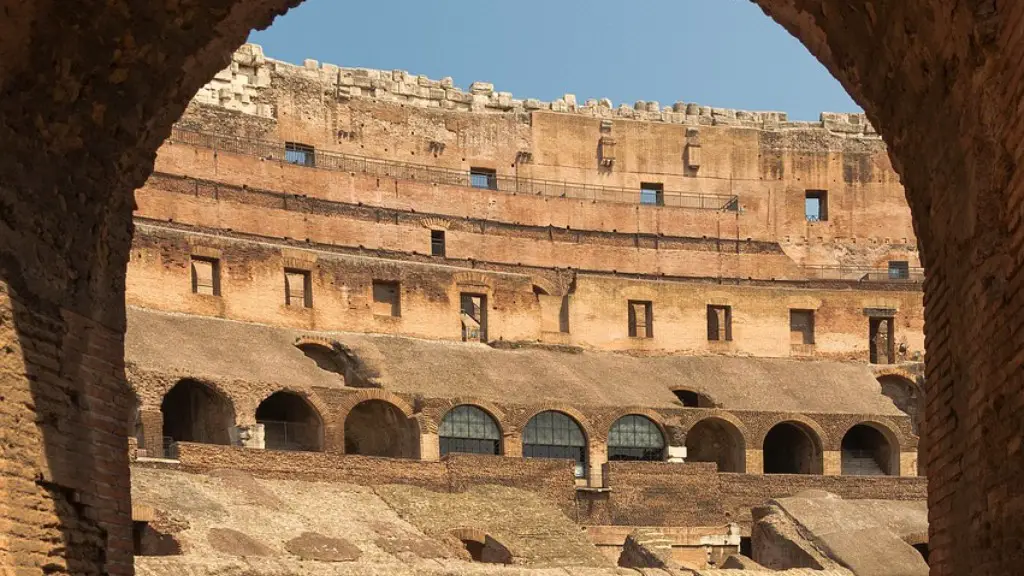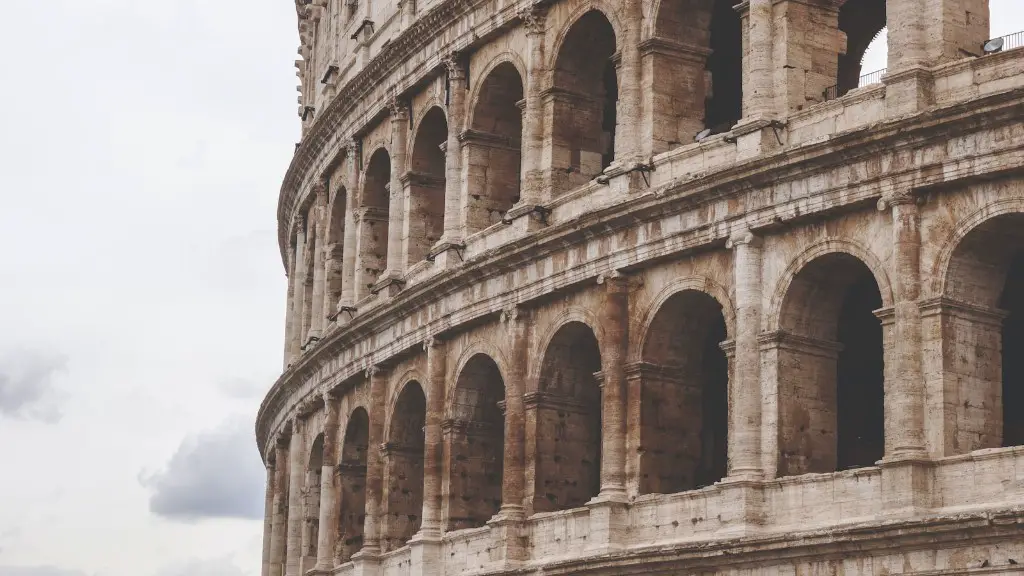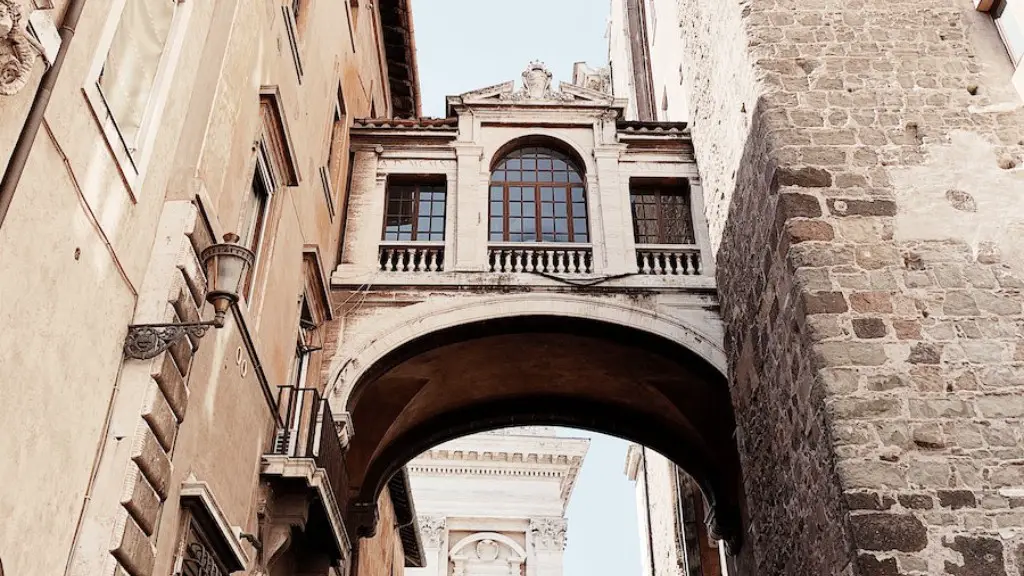Ancient Roman Games
Ancient Roman civilization is renowned for its varied and innovative entertainment. Games played in Ancient Rome included the ludus latrunculorum, the tournament, and the circus. These games were enjoyed by all classes from the upper class citizens to the common people.
The ludus latrunculorum was a game of strategy played by two individuals on a checkered board. This game was popular in the 2nd century BC, and the board was either flat or three-dimensional depending on the players’ preference. The tournament was a popular physical game involving combat where warriors had to fight against each other using a variety of weapons. The combat could range from duels to large battles where thousands of warriors took part.
The circus was a place of fun and entertainment where races, chariot rides and animal spectacles occurred. Chariot races were held in huge amphitheaters like the Circus Maximus, where tens of thousands of people used to come and watch. Spectacles displayed exotic animals, gladiatorial battles and even public executions. This public entertainment quickly became popular and the circus was used for the most important events in Rome.
Apart from ludus latrunculorum, tournament and circus, ancient Romans also indulged in a variety of leisure activities including gambling, baths, theatre, and art. Gambling was extremely popular and involved stakes to be placed on various games such as dice or knuckle bones or even duels or gladiator fights. Roman baths were a popular retreat for the rich, who enjoyed sheltering in hot baths and cold plunge pools.
Theatre in Ancient Rome
Theatre had a deep impact on the cultural and social life of Ancient Rome. Drama was used to spread the messages of gods, the morality of the poor, and other political issues. Popular performance venues in Rome included the Theater of Pompey and the Circus Maximus. A variety of plays, myths, poems, and ballet pieces were performed by famous actors and actresses, often wearing masks.
Theatre arts were highly appreciated in Ancient Rome, as these allowed citizens to express their spiritual, moral, and political views. Dramas often included characters from mythology, tragedy and comedy, which were performed in special costumes and with masks featuring an exaggerated expression. Such performances were often compared to a religious experience and were a way to artistically come together as a collective.
Recreational Activities in Ancient Rome
Apart from spectator sports, the Ancient Romans also indulged in different recreational activities. The most popular activities included ball sports, board games, drinking and gambling. Ball sports such as harpastum, episkyros and follis were popular and played by both adults and children alike. Popular board games included ludus latrunculorum and duodecim scripta.
Drinking was also a popular pastime for the Ancient Romans, and was indulged in frequently by all social classes. Drinking games such as dice, knuckle bones and quizzing were popular, and wine and beer were widely consumed and even used medicinally. Gambling also became popular among the Ancient Romans, and bets could be placed on dice and knuckle games, duels or gladiator fights.
Religious Games in Ancient Rome
Religious games and activities were also an important part of the Roman culture. The most important of these was the Ludi Festivi, which were held in honor of the gods. Events involved theatrical performances and plays, fireworks, religious ceremonies, processions, and chariot races.
The Ludi Plebeii, which was held twice a year, was a major event to honor the god Apollo. This event included theatrical performances, sporting activities, and religious ceremonies. In addition, the Ludi Florales, which were held in honor of the goddess Flora, were also widely celebrated with theatrical performances and flower processions.
Social Impact of Ancient Roman Games
The games of Ancient Rome had a significant impact on society. They served as a form of entertainment for people from all walks of life, and as a way to bond with others. These games were also used to communicate political, religious and social messages. Moreover, these games were used to showcase the skills of the Roman people, and were seen by many as deeply symbolic of their civilization.
The games played in Ancient Rome also reflect the importance given to religion and godhood. Celebrations such as the Ludi Festivi and the Ludi Plebeii were held in honor of the gods, while religious ceremonies and theatrical performances were used to honour them.
Learning Outcomes of Ancient Roman Games
Games played in Ancient Rome had various learning outcomes. The most prominent outcome was the development of analytical skills, as games such as ludus latrunculorum required strategic thinking. Further, social skills were also developed, as during these games participants many times would play in groups or against other groups. Finally, the games were also a great way for citizens to display their skill and strength, and as an avenue for self-expression.
In addition to the above, the games also helped in forming social bonds and at times brought together people of different backgrounds. Additionally, it is important to mention that games such as ludus latrunculorum, tournament, and circus held importance in Ancient Roman culture and art, demonstrating their creative and imaginative spirit.
Architecture Impact of Ancient Roman Games
The Ancient Roman games impacted architecture as well. Special buildings were constructed for both spectators and players of sporting events. Popular venues of such events included Music Hall, the Circus Maximus, and the Theatre of Pompey. These buildings were designed to provide a place for thousands of people to watch theatrical performances, gladiator fights and chariot races.
Ancient Roman architecture also had an aesthetic value, which incorporated visual symbols such as the columns of the Coliseum, the gates of the Pantheon, and the Ancient Roman temples. These sites were a testament to the rich and expansive cultural life of the Ancient Romans.
Conclusion of Ancient Roman Games
In conclusion, Ancient Roman games had a wide range of implications, both social and cultural. These games enabled opportunities for strategic thinking, self-expression, and social bonding. Sport activities such as the ludus latrunculorum, tournament, and circus were popular among Romans. Furthermore, these activities impacted architecture, with constructs such as the Circus Maximus and Theatre of Pompey demonstrating the Ancient Roman’s artistic and creative spirit. The games of Ancient Rome are a testament to the ingenuity and resourcefulness of its citizens.


